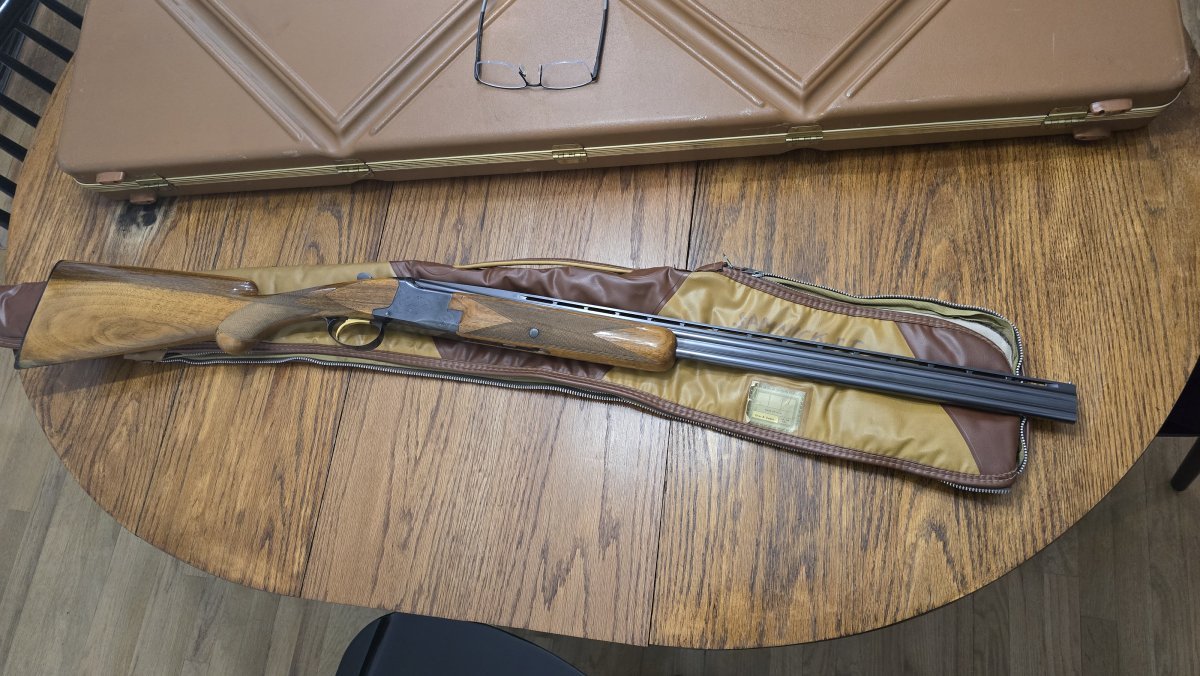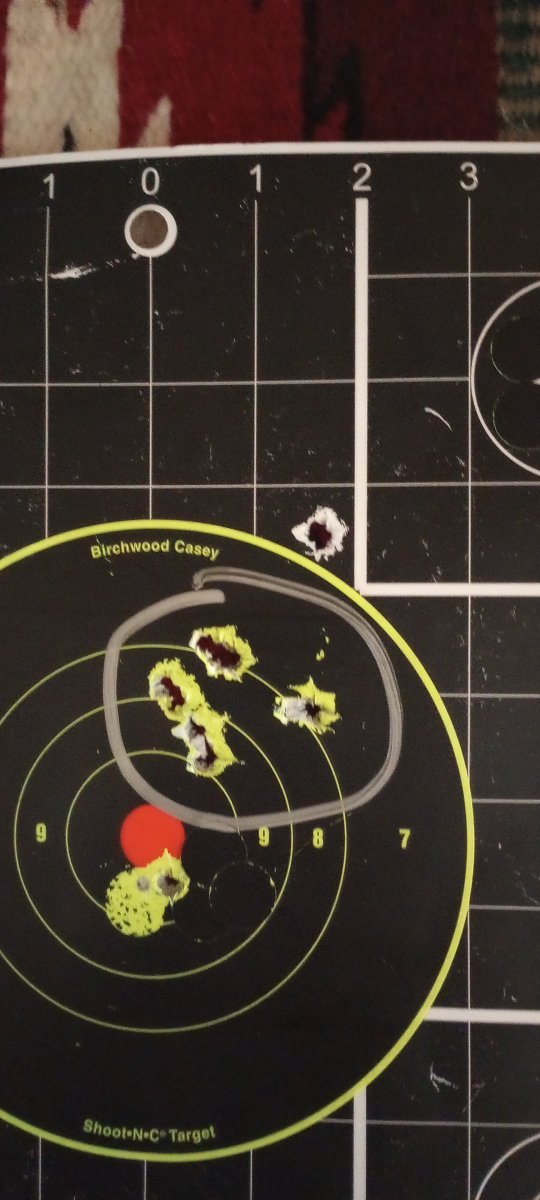Is there a cheap way to measure gas port size? I have calipers and a bunch of drill bits, but I'm sure there's a better way?Trying to help folks from learning how I learned!
Navigation
Install the app
How to install the app on iOS
Follow along with the video below to see how to install our site as a web app on your home screen.
Note: This feature may not be available in some browsers.
More options
-
ODT Gun Show & Swap Meet - May 4, 2024! - Click here for info
You are using an out of date browser. It may not display this or other websites correctly.
You should upgrade or use an alternative browser.
You should upgrade or use an alternative browser.
A Tale of Two Crush Washers, or Two Crush Washers One Barrel, and other AR oddities
- Thread starter cmshoot
- Start date
Is there a cheap way to measure gas port size? I have calipers and a bunch of drill bits, but I'm sure there's a better way?
I use a pin gauge set.
I don't know what handguard it was but they recommended torqueing the barrel nut from 30-90 lbs. I am not saying it is correct or recommended but I have seen it on one particular maker. It was a high dollar handguard. I don't use cheap crap on handguards or anything else for that matter but I found it odd it was so high. It wasn't a milspec barrel nut. Seemed a little high to me. I think I ended up torqueing it to 60 lbs. I thought that would be middle ground.
Exactly!It world seem like at some point the receiver would crack before the nut would come loose.
The one thing that puzzled me is it wasn't a barrel nut that needed to be timed. I would think a smaller torque spec variable would suffice.
It world seem like at some point the receiver would crack before the nut would come loose.
I use a Midwest Industries reaction rod for jobs like that so the receiver won't be damaged.
I suppose it would be possible for the barrel nut and receiver to become locked together, say due to galvanic corrosion or some sort of thread locker. In that case, it might be possible to turn the receiver so that the index pin on the barrel tears into the threaded extension on the front of the upper receiver.
Follow manufacturers’ recommendations on the use of Loctite.
No part of the milspec system requires Loctite during assembly, nor is it recommended.
Some companies will specify specific types of Loctite for rails, attachments, etc.
When you do use Loctite, a lil’ dab will do ya. Because the company ships a tube with their part doesn’t mean you use the entire tube on a single part.
DO NOT use Loctite on barrel nuts, receiver extensions, castle nuts, or grip screws.
Guy came in the shop with his lower build. The takedown pin was retained, but the detent wasn’t holding it in either position; it just slid back and forth.
He had tried to loosen the castle nut to check the issue, and couldn’t loosen it. By the time he brought it to me, the castle nut was well and truly buggered.
I attempted to loosen it with a BCM tool and 18” breaker bar. She didn’t want to budge. I took a closer look, and saw some sort of sludge all around the castle nut. When I asked, he confirmed that he used blue Loctite on it.
I added some Kroil and some heat.
I broke it loose, and had to use the wrench the entire time to back it off. At no point did it loosen up enough to turn with my bare fingers. That’s how much Loctite was in the threads.
Once I backed the castle nut off, the receiver end plate was glued to the receiver with Loctite. I popped it loose, but now the receiver extension wouldn’t turn. I asked, and he confirmed that the receiver extension had blue Loctite securing it to the lower receiver.
Some Kroil and heat, and I got the parts separated.
I had to pull the take down pin detent spring out. It was full of Loctite. The detent was stuck in place with Loctite. More Kroil and heat.
Managed to push the detent pin up enough from the front end to get the take down pin out. Then I stuck a tool in the hole from the front and pushed the detent out of the receiver.
Spent some digging cleaning and digging all the Loctite out of every nook, cranny, and thread.
Gentleman didn’t want me to reassemble it, so I charged him for the work, and sold him a new castle nut, detent, and detent spring. We had a 2-way discussion on how to properly reassemble it, and I told him that if he needed any help to come on back and I’d walk him through it.
Gave him the date of the next AR Builder’s / Armorer’s Course at TruPrep, which is Feb 11.


No part of the milspec system requires Loctite during assembly, nor is it recommended.
Some companies will specify specific types of Loctite for rails, attachments, etc.
When you do use Loctite, a lil’ dab will do ya. Because the company ships a tube with their part doesn’t mean you use the entire tube on a single part.
DO NOT use Loctite on barrel nuts, receiver extensions, castle nuts, or grip screws.
Guy came in the shop with his lower build. The takedown pin was retained, but the detent wasn’t holding it in either position; it just slid back and forth.
He had tried to loosen the castle nut to check the issue, and couldn’t loosen it. By the time he brought it to me, the castle nut was well and truly buggered.
I attempted to loosen it with a BCM tool and 18” breaker bar. She didn’t want to budge. I took a closer look, and saw some sort of sludge all around the castle nut. When I asked, he confirmed that he used blue Loctite on it.
I added some Kroil and some heat.
I broke it loose, and had to use the wrench the entire time to back it off. At no point did it loosen up enough to turn with my bare fingers. That’s how much Loctite was in the threads.
Once I backed the castle nut off, the receiver end plate was glued to the receiver with Loctite. I popped it loose, but now the receiver extension wouldn’t turn. I asked, and he confirmed that the receiver extension had blue Loctite securing it to the lower receiver.
Some Kroil and heat, and I got the parts separated.
I had to pull the take down pin detent spring out. It was full of Loctite. The detent was stuck in place with Loctite. More Kroil and heat.
Managed to push the detent pin up enough from the front end to get the take down pin out. Then I stuck a tool in the hole from the front and pushed the detent out of the receiver.
Spent some digging cleaning and digging all the Loctite out of every nook, cranny, and thread.
Gentleman didn’t want me to reassemble it, so I charged him for the work, and sold him a new castle nut, detent, and detent spring. We had a 2-way discussion on how to properly reassemble it, and I told him that if he needed any help to come on back and I’d walk him through it.
Gave him the date of the next AR Builder’s / Armorer’s Course at TruPrep, which is Feb 11.
Customer brought in a factory Aero .300Blk upper. He had a local shop install a Keymo adapter for his suppressor. The adapter turned out to be out of spec, so he brought it to me to be swapped for another Keymo adapter.
Whatever sort of threadlocker the LGS used to install this adapter was incorrect, in that it wasn't Rocksett. Thankfully they used the wrong stuff, because it made my job a lot easier.
The old adapter removed so easily that I guarantee it would have unscrewed and stayed in the can after it was shot for the first time.
They used so much threadlocker that it had run to the end of the adapter, and also run down the barrel all the way to the front of the chamber. Down one side of the rifling was a layer of threadlocker. The threadlocker completely blocked the 2 ports on the sides of the adapter.




Pulled the barrel from the receiver. Using solvents and a bore brush, I had to scrub the barrel out quite a bit to get rid of the threadlocker. I found a thick clump of threadlocker at the throat that was too thick to readily scrub out. I carefully "chiseled" the clump out, then scrubbed the remnants off with more solvent and a bore brush.

The clump of threadlocker was difficult enough to remove, and in just the spot, that there's a possibility that if the owner had tried to shoot it, it could have caused a dangerous pressure spike.
Once the barrel was cleaned of all threadlocker, I reassembled the entire upper receiver assembly, and properly installed the new Keymo adapter using Rocksett and correct torque specs.
Whatever sort of threadlocker the LGS used to install this adapter was incorrect, in that it wasn't Rocksett. Thankfully they used the wrong stuff, because it made my job a lot easier.
The old adapter removed so easily that I guarantee it would have unscrewed and stayed in the can after it was shot for the first time.
They used so much threadlocker that it had run to the end of the adapter, and also run down the barrel all the way to the front of the chamber. Down one side of the rifling was a layer of threadlocker. The threadlocker completely blocked the 2 ports on the sides of the adapter.
Pulled the barrel from the receiver. Using solvents and a bore brush, I had to scrub the barrel out quite a bit to get rid of the threadlocker. I found a thick clump of threadlocker at the throat that was too thick to readily scrub out. I carefully "chiseled" the clump out, then scrubbed the remnants off with more solvent and a bore brush.
The clump of threadlocker was difficult enough to remove, and in just the spot, that there's a possibility that if the owner had tried to shoot it, it could have caused a dangerous pressure spike.
Once the barrel was cleaned of all threadlocker, I reassembled the entire upper receiver assembly, and properly installed the new Keymo adapter using Rocksett and correct torque specs.
Unbelievable! On a factory piece no less. Wonder what people are thinking when they do something like that. Probably nothing at that moment. Daydreaming on the job.
Similar threads
- Replies
- 0
- Views
- 55






